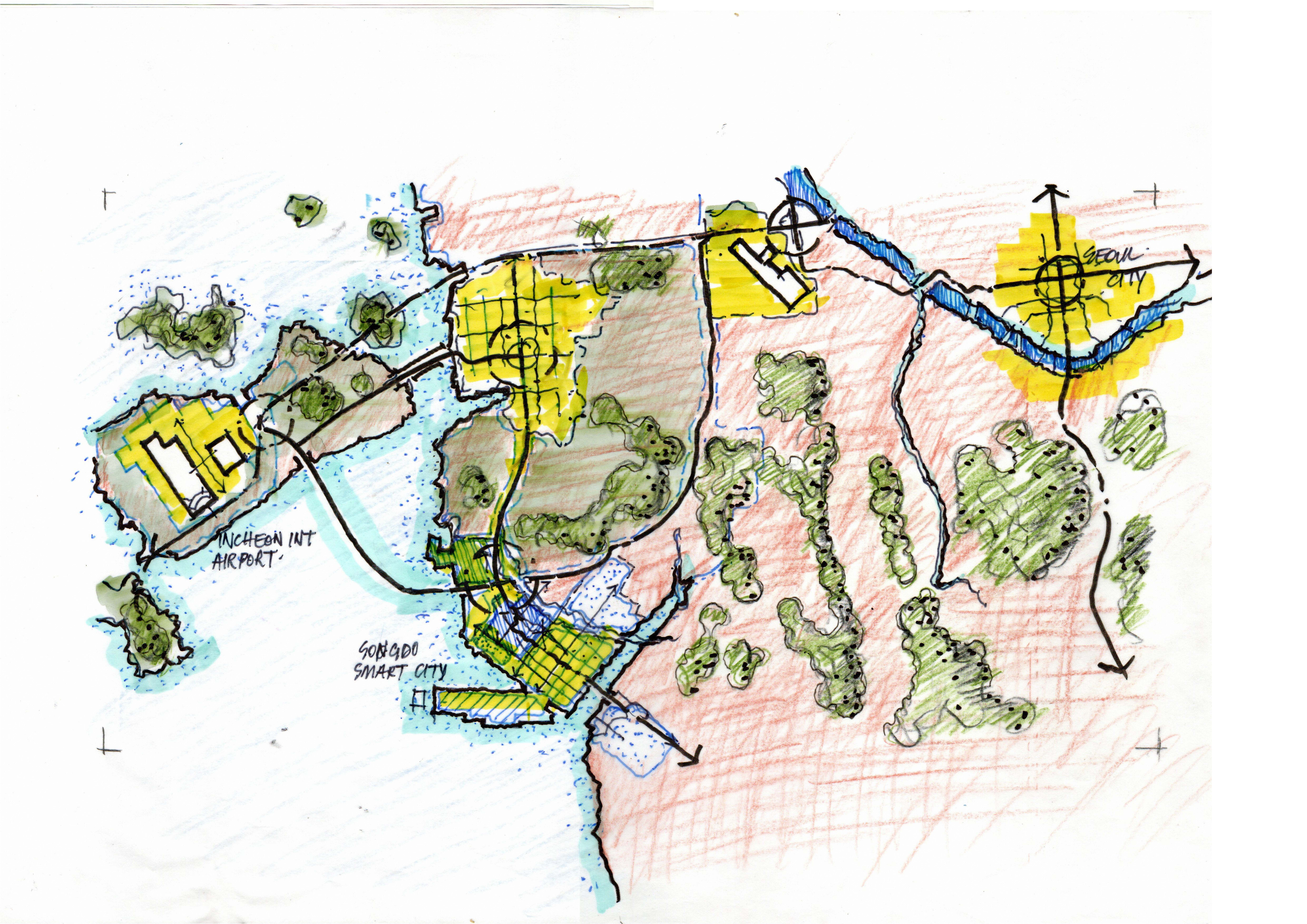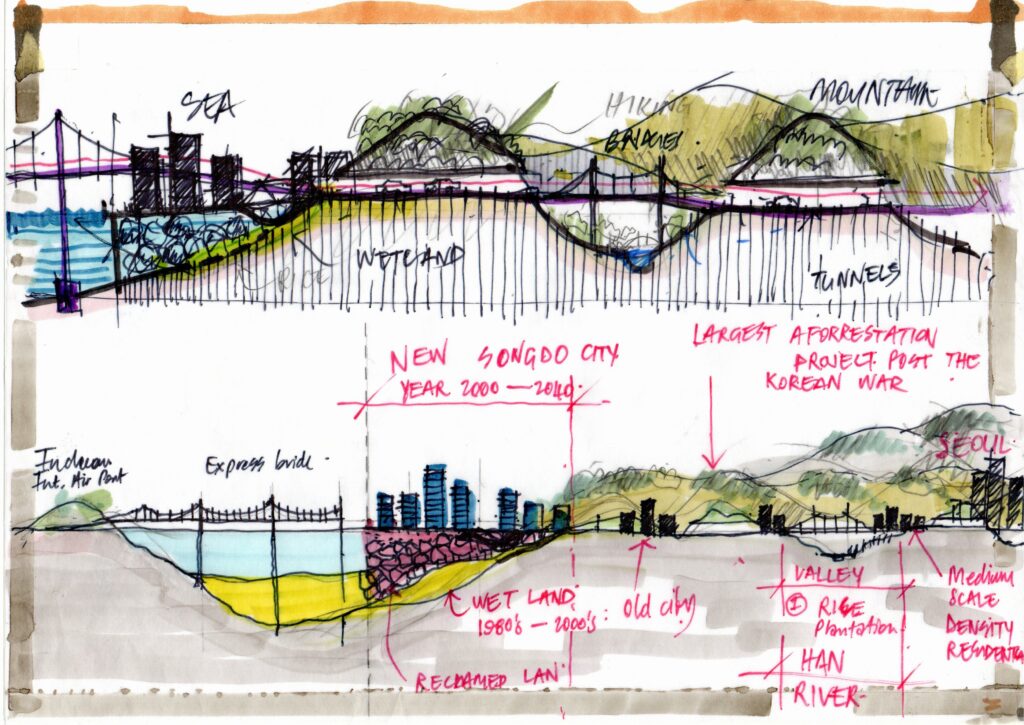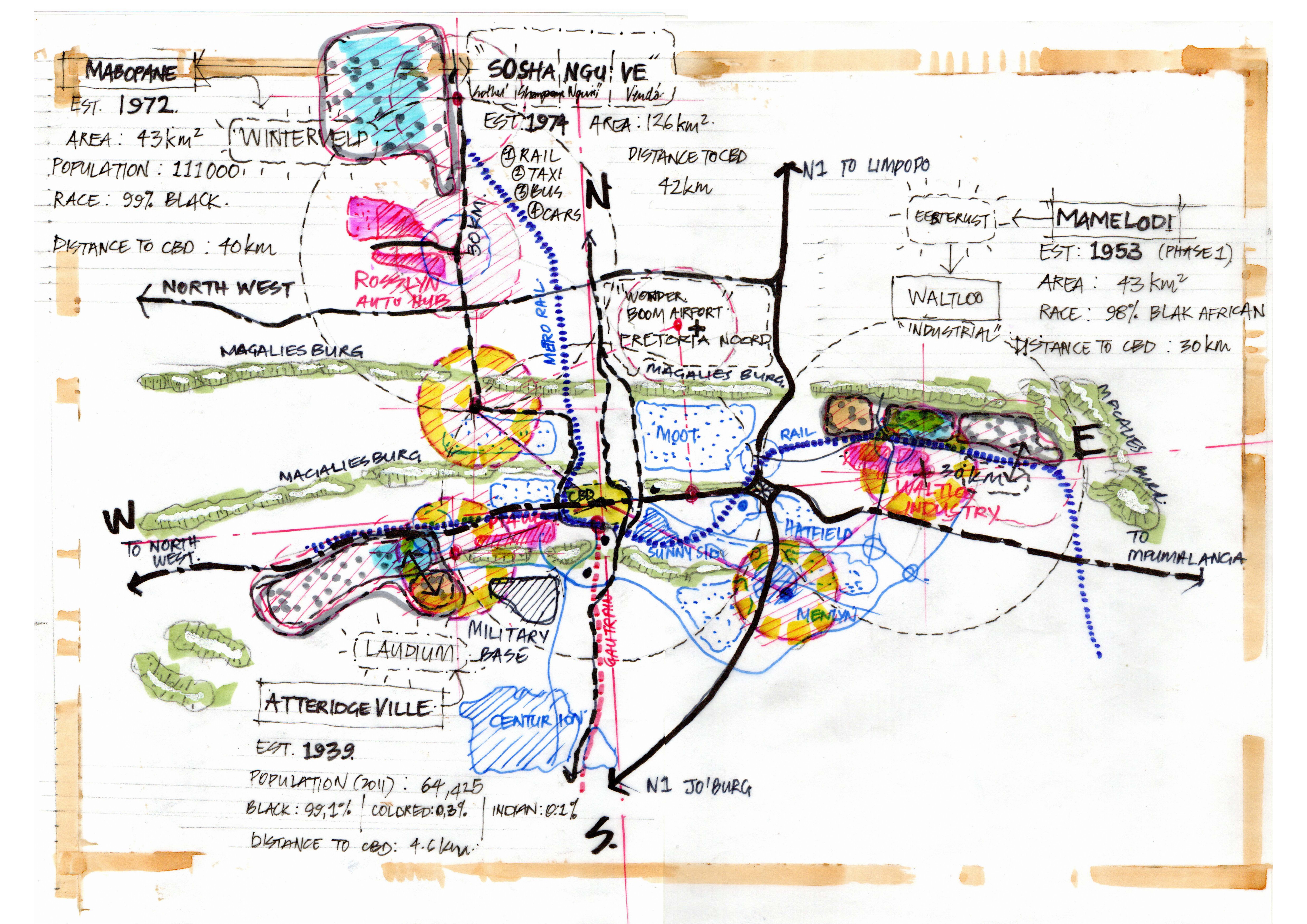Smart cities come with a host of benefits, not the least among them is the social benefit. With many examples to draw from the question remains: What unique challenges do South African cities face when trying to make a city smart?
By Duncan Nortier
Smart cities can bring communities together, increase access to a city, improve communication, and involve the poor and marginalised in the functioning of a city. With all the talk of investments, it’s important not to lose sight of the fact that adopting a smart city solution should help the people living in the city.
At odds

A drawn map of Korea showing the geographical significance of Songdo in relation to the airport and Seoul. Images are drawn by and credited to Msizi Mkhize as part of his ongoing research.
Looking at successful smart cities from around the world reveals that cities are planned around a set of objectives, and with South Africa’s existing infrastructure there is a roadblock- how do we create an equitable city built around the needs of its inhabitants in the shadow of apartheid infrastructure?
With many smart cities already planning around equal access, this presents a unique problem in the adoption of smart cities in South Africa. It also presents city planners, architects and engineers with the unique chance to rectify the past and build cities that serve everyone.
Msizi Mkhize, a professional architect for the Department of Public Works and Infrastructure, has the perspectives of living in both Korea and Pretoria in South Africa. He says “It might feel like comparing apples with oranges, but we can look to places different from us and use what they have learned.”
Songdo is a very successful smart city, one that comes from different circumstances than South Africa. It was built from scratch to accommodate population shifts and urbanisation around Seoul. The success of Songdo can be attributed, Msizi says, to, “forward-thinking policy and governmental support.” It is important to note that while a successful example, it is not wholly inclusive of lower-income people, which is something that will have to be considered in the South African context.
Access is the key feature of any smart city and Songdo is located 12km from the airport, connected by expressway and train. The city also has 25 km of bicycle paths that connect the different areas.
Sustainability was at the heart of planning Songdo, and the city is host to 106 buildings that carry the Leadership in Energy and Environmental Design (LEED) certification, amounting to 2 million square feet of LEED-certified space. The streets have sensors that measure energy use and traffic flow, waste removal is done through a pneumatic system that sucks garbage away from the city and even automatically sorts out the recycling from the solid- non-recyclable waste.
The city reflects the human beings who use it and live in it, technology supplements the city. Technological innovation is the tool not the purpose of the city. Msizi notes “Designing with human beings in mind creates the smart city, it is not just a city that happens to be smart but it is purpose-built for the people who use it.” This reframing allows for a better understanding of how implementing smart city programs can benefit people.

A map showing how Songdo was adapted to its environment. Images are drawn by and credited to Msizi Mkhize as part of his ongoing research.
From east to south
However, It is not the technology that separates Sogndo from Pretoria, it is the fact that Songdo was built from scratch with the idea that people who need to use the city should have access to it.
Where Songdo was built with people in mind, Pretoria was built with separating people in mind. “Aerial views of Pretoria show a distinct separation between north, south, east, and west. It shows a distinct segmenting of the city, it shows that townships were pushed beyond the city, it shows how little access there is” Says Msizi.
With two very different cities, how can South Africa even begin to look at places like Songdo in order to benefit itself? “We are not starting from scratch, we are restarting with what we have inherited,” says Msizi. Looking at the successes of Songdo, South Africa can plot the best way forward.

A drawn map of Pretoria showing how the city was designed to be segregated. Images are drawn by and credited to Msizi Mkhize as part of his research.
“It starts with connecting people to the city. Before the technology we have to make it easier for people to get to the city and move around the city.” While this is no easy task there are many studies that tout the benefits of an integrated and mixed transport system including a functioning train system. Trains are environmentally friendlier than cars, fast, ease congestion, and are available to people without cars, supplementing this with buses and cycle paths creates an environmentally friendly city with less congestion and more accessibility.
The general failure to maintain South Africa’s Metrorail and the limited accessibility of the Gautrain really does isolate areas from each other, but the remedy is upgrading our existing infrastructure. “It will take political will and budget, but this is necessary if we want our cities to be more accessible and liveable.”
As South Africa sees the effects of extreme weather and climate change, this reality must play its role in planning our upgrades. “Songdo had the benefit of having sustainability as a core value from the beginning, when we move forward to take our cities into the future we need to adopt sustainability as a core value to ensure our cities are liveable and inclusive while protecting the environment ” adds Msizi.










